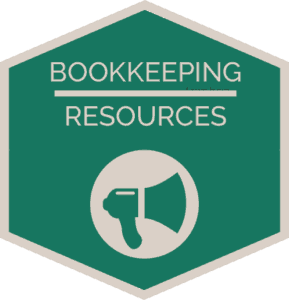Some people think your best business asset is your money, or your idea, or your patented product. It’s not: it’s your reputation, and you are sitting on a mound of gold.
Protecting your brand and the public perception of it is one of the best ways to boost sales and revenue. If it’s not stellar at the moment, no worries—you can always improve it.
Word-of-mouth is still the best way to boost your reputation, both online and off. Follow this 4-step plan and you’ll have new customers flocking to your products or services in no time.
Step 1: Find Out What People Are Saying About You
Before you can work on your reputation, you have to know what that reputation IS. Search the following places for positive and negative comments:
- Search engines: A quick Google search will tell you a lot. Does your business even come up when you search for it? Are there Google reviews? Has anyone written a blog post praising or trashing your company?
- Social media: Do you have any mentions on Facebook, Twitter and LinkedIn? If you have profiles set up for your business, are any customers leaving comments?
- Review sites: If there are any review sites specific to your industry, see if you’re listed, and if you have any ratings or reviews. If it applies to your business, check Yelp.
- Website analytics tools: If you have a website, and you have analytics tools set up, check your referrers. You might be getting traffic from obscure niche forums related to your industry, and it’s important to know what people are saying there, too.
If your reviews are all positive, give yourself a gold star! If you have no reviews, you have a blank slate to start with, which isn’t a bad thing. And if you have negative reviews, go directly to Step 2.
Step 2: Address the Haters, Nicely
So you’ve gotten some bad reviews or comments. After you lick your wounds and take some deep breaths, you’re going to want to respond to them. Calmly. Remember that other potential customers evaluating your business are going to read your response. A good response includes:
- an apology.
- an assurance of your commitment to customer satisfaction.
- a way to contact you so you can make it up to them (and make the conversation a private one).
A good response is not defensive and it doesn’t blame the customer, even if they were in the wrong. It’s about your reputation, not who was right.
Unfortunately for business owners, the Internet has made customer service complicated. It’s not enough to put a contact form on your website and have an email back-and-forth with an unhappy customer. You have to go where they are doing the complaining and deal with them there, often in a very public way.
And here’s the real diamond here: if people are complaining, it’s your opportunity to grow and improve. We can’t see our own blind spots. Look at negative feedback as a blessing and a gift. You will only grow professionally, and hopefully your bottom line will, too.
Step 3: Boost Your Online Profile
When potential customers are looking for products and services, they almost always start online. Start with a good, robust website that clearly communicates who you are and what you do. It should be eye-catching and easy to navigate, and (this is an important one) updated frequently.
Blogging about your industry is a great way to boost your website traffic and present yourself as an expert, both on your own website and elsewhere. Pitching yourself as a blogger on high-profile websites in your industry is also an effective tool for getting your name—and by extension, your business—out there. It might even bring in some extra money—some websites will actually pay you to write for them.
If you don’t have social media profiles set up for your business, get on it. Post frequently on social media, and respond to comments and questions quickly. Personally, I think with a bit of good humor. Keeping things light means you’re approachable. As the saying goes people do business with people, not companies. Join Facebook and LinkedIn groups in your industry, and be active in them—they’re a solid networking and sales lead tool.
Don’t forget to utilize your happy customers, too! Ask them to write you reviews, recommendations and testimonials. A strong affiliate program can go a long way, or a nice gift or two for your strongest referrers can mean a lot. Let them do some of your marketing for you—it’ll give you more time to promote your business and make sales.
Step 4: Boost Your Offline Profile
Being active in your community is another important way to raise your business profile and reputation. Participating in volunteer activities, sponsoring events, and donating to charitable causes can get you new customers in your local area.
Searching out industry awards and applying for them can also lead to a huge boost in visibility. If you win, you get to use that award (plus any press it generates) as a marketing tool. Even being nominated for one can help to raise your profile.
If you follow these steps and it doesn’t help your reputation, you gotta ask yourself if you are barking up the wrong tree (see? humor!). If you are getting the same complaints over and over, it might be you, not the customers, and it’s time to dig in and do that good old self-improvement work. If you have a decent-sized email list, email a survey to your subscribers and solicit feedback, and then act on it.
Guarding your reputation as an asset of your business can be a bit time consuming, but the better you are at the services and products you provide, the less you will need to work at it. Go for the gold!


